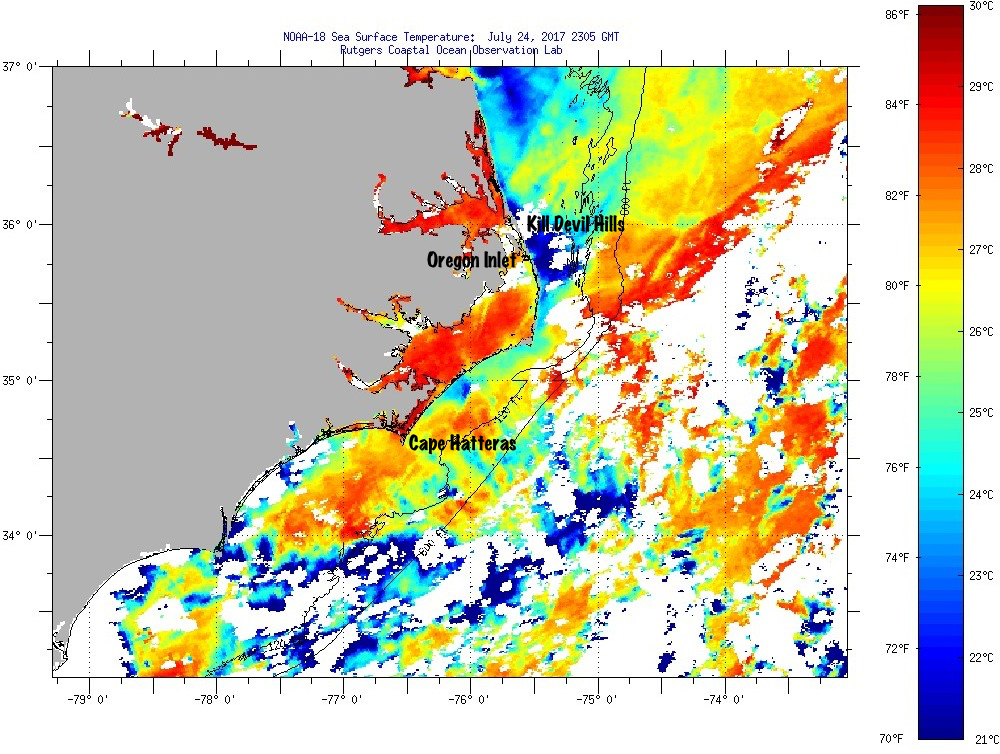 Sea surface temperatures off the Outer Banks, July 24. The Rutgers Coastal Observation Lab map is a bit difficult to follow but the blue next to the Outer Banks shows colder near shore waters.
Sea surface temperatures off the Outer Banks, July 24. The Rutgers Coastal Observation Lab map is a bit difficult to follow but the blue next to the Outer Banks shows colder near shore waters.Hot Days Create Cold Waters
The daytime temperature have been pretty hot on the Outer Banks for the past couple of days. Actually, the summer overall, has been warm with most days over 90.
That heat hasn't transferred to the ocean, though.
It's a shock to the system hitting jumping into the water when the temperature difference between air and water is 30 degrees or so. To be sure, after the surprise wears off, it sure feels go, but that first burst of cold is a jolt to the system.
For the past four or five weeks the ocean water temperature has been struggling to get out of the 50s, and today's 66 degree water temp was the highest it's been in some time. Just two days ago, the water temperature was 58 degrees at the Corps of Engineers Field Research Facility (Duck Pier).
Which begs the question, "If it's been so hot outside, why has the water stayed so cold."
The Explanation
There's a combination of factors that are creating that wide temperature spread between air temperature and water temperature.
It's hard to say just what the most important piece of the puzzle is, but starting with the wind is a good place.
For almost the entire summer to date, the wind has been consistently from the southwest. Summertime winds are generally from that direction, but this year there has been no significant deviation from that.
The way ocean temperatures vary is the next piece of the puzzle. In January, Outer Banks ocean temperatures are in the low 50s. Typically by mid July, they are around 85—a 30 degree variance.
What is heating the water is sunlight. Remembering high school physics, cold air and cold water sink, meaning the warmer water is on the surface and the colder water sinks to the bottom.
During an extended period of offshore winds—southwest—the warmer surface water is pushed away from the shore, allowing the colder water to upwell and come ashore.
Pretty cool? Or cold, perhaps.







